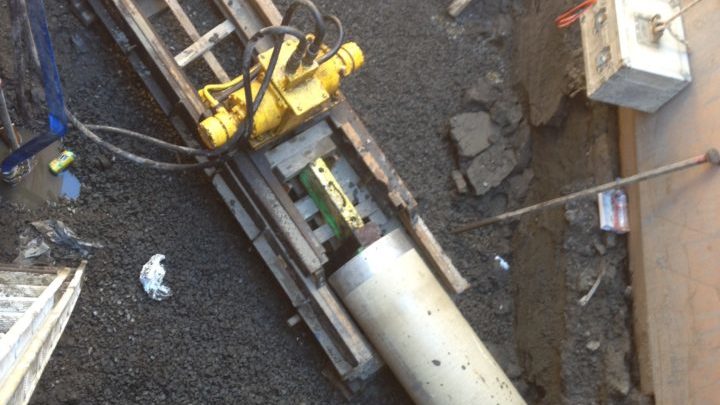Stuart Harrison caused a stir in the microtunnelling industry when the Vermeer AXIS laser guided boring system was officially launched in 2009. Since then, laser-guided machinery has been used to install hundreds of thousands of metres of sewer and water pipelines around the world, and has changed the game for pipeline projects in Australia.
So what makes laser guided microtunnelling a standout in the crowded field of trenchless pipeline installation methods? Apart from the science fiction appeal, laser guided systems offer a number of real advantages that all serious pipeline project managers should be aware of.
- Accuracy
Precision is always going to be a primary selling point for a laser guided system, and for good reason; as the density of urban infrastructure increases, the acceptable margin of error for tunneling systems grows smaller.
Few things are worse during a pipeline installation than unexpectedly colliding with existing underground infrastructure or damaging a nearby surface asset. Such accidents can turn your profitable project into an expensive and prolonged ordeal.
Laser guided systems solve this problem by utilising a camera mounted at the extreme front of the pilot drill head that provides a live feed of the drill at work. As the head is constantly monitored, the operator can make hydraulic steering corrections in real time and ensure the drill stays on course.
The high precision afforded by laser guidance puts microtunnelling over the top on other pit-launched technologies like thrust boring and bed boring, which are traditionally unguided and far less accurate.
- Versatility
The flexible layout of laser-guided boring systems like the Vermeer AXIS allow them to perform well in a wider variety of conditions than other methods.
The equipment can be configured roll-in-roll-out for a quick set up and pack down when the job site is straightforward, or brought in piece by piece for projects with more limited access.
Vermeer AXIS in particular was designed to meet a range of product pipe and sizing specifications. Its 345mm pilot line provides a sample of the ground conditions at the site prior to installation. Based on this information, the line can be retracted and bits changed to optimise drilling for the ground conditions at hand.
- Environmental effect
When it comes to environmentally-friendly installation techniques, laser guided boring machines are an ideal option in several regards.
The Vermeer AXIS’ ability to core and extract ground with little to no damage to the surrounding earth means it can be used for keyhole pipeline installations, whereby pipe is installed via small vertical shafts.
Extreme accuracy is required for such a project due to the narrowness of the shaft, but the payoff is substantial. In addition to a smaller site footprint, keyhole installations eliminate the need for major excavation, reducing overall disruption to the area and lowering restoration costs.
Along with their minimal disturbance to the ground and surrounding community, microtunnelling machines also produce little in the way of greenhouse gases. Research carried out at Arizona State University in the US showed conclusively that Vermeer AXIS produced the fewest emissions of all the installation methods studied.
Bottom line
For today’s pipeline installation clients, on-grade accuracy, high efficiency, and low installation and restoration costs are all top priorities.
Laser guided microtunnelling effectively balances accuracy, versatility, productivity and environmental impact in a way that no other installation system can. The explosive growth of Vermeer AXIS and similar equipment underscores an alignment with new customer expectations, and provides a glimpse at the road ahead for public infrastructure projects.
Wherever you are in Australia, contact Edge Underground on 1300 522 533 (JACKED) to discuss your microtunnelling job.

